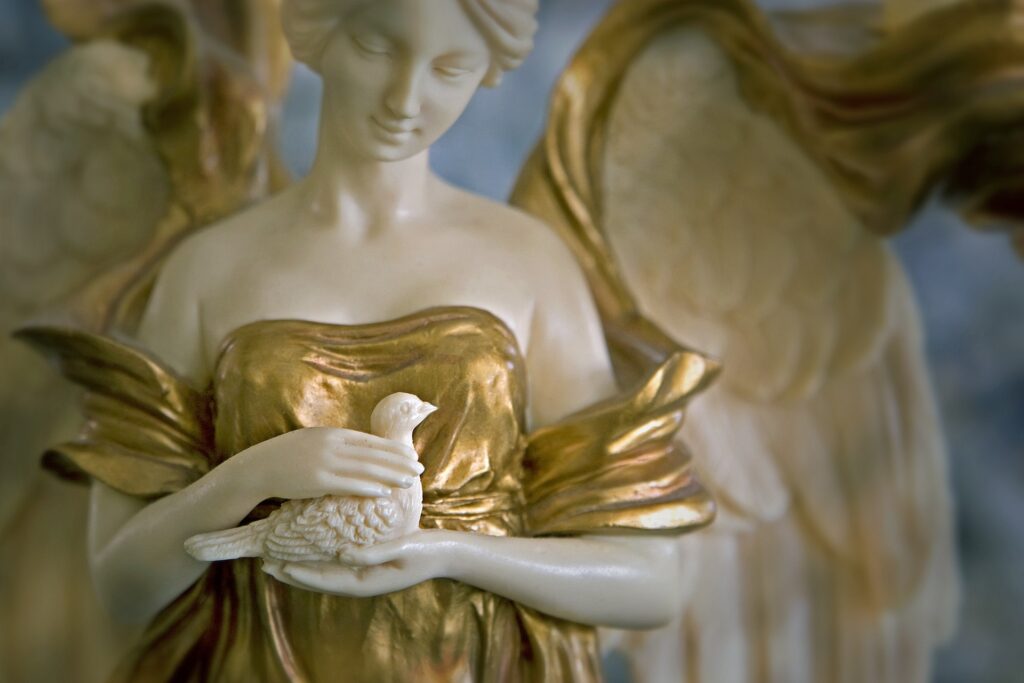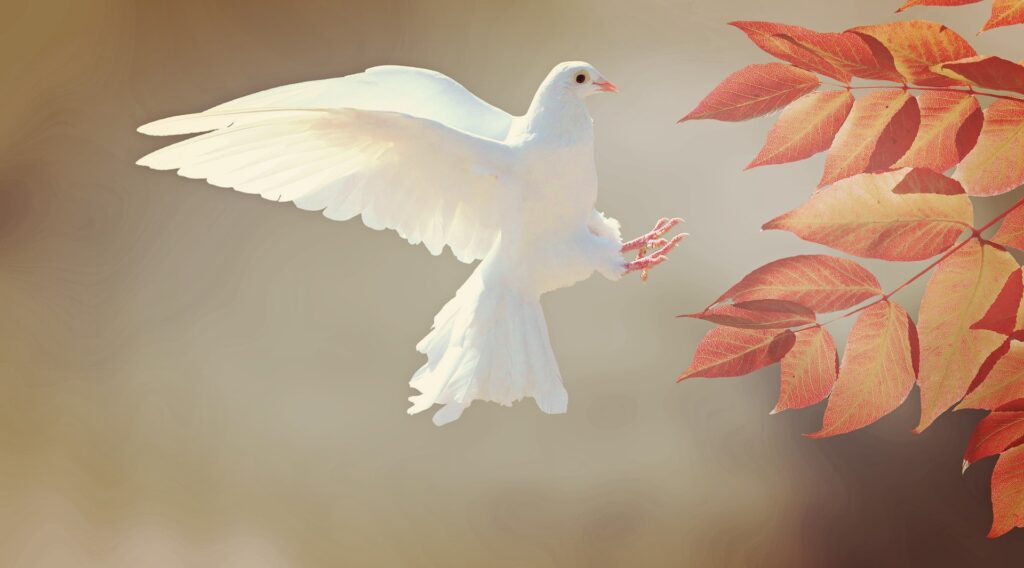You know the image: a white dove in mid flight, often with a piece of olive branch in its beak or clutched in its claws. But how did this image of a dove become the international symbol of peace? We’ll discuss the fascinating history behind the symbolism, and more interesting facts about these beautiful birds.
Ancient Dove Symbolism
Of course, one of the most well-known mentions of doves—and the origin of the dove and the olive branch—is from the Bible. Doves are mentioned many times in the ancient book, from the baptism of Jesus to after the flood, when Noah sent out a dove and it returned with an olive branch (a sign of dry land nearby). As such, a dove came to represent peace with God, innocence, and purity.

But the Christians weren’t the only ones that assign meaning to doves. Many Native American stories feature the delicate white bird in their folklore. The Blackfoot tribe assigned the dove as protector of their warriors, ensuring that they would return unharmed after a battle. And the Aztec and Mexican Indian tribes would use doves in their wedding rituals, seeing doves as symbols of love.

In Greek mythology, the dove symbolizes Aphrodite, the goddess of love. This coincides with Mesopotamian myth, which touts doves as conduits of carnal love, sexuality, and war. In the Islam religion, doves hold a special significance, as they were said to have assisted the prophet Muhammed. And in Japan, the image of a dove with a sword represents the end of war.
Dove Symbolism Today

Doves remain an emblem of peace In modern times. For instance, for many years they released doves at the Olympic Games to signify a call for peace among the participating nations. And through the years, political and anti-war protesters hold up signs with doves and peace symbols on them to highlight their message. Today, some still release white doves at both weddings and funerals, signifying the hope for eternal peace on both occasions. Dove symbology is so entrenched in our collective culture that countless organizations use it in their iconography, including the United Nations International Day of Peace logo of a dove with an olive branch.
Are Doves Peaceful Birds?

Doves, like pigeons, are a member of the Columbidae bird family, which includes over 300 species. We have at least 15 types of doves in North America, including the rock pigeon and the mourning dove. Typically, doves as a whole are docile creatures with incredible intelligence. (They can even distinguish the difference between Van Gogh and Chagall paintings, and recognize the entire English alphabet, letter by letter.) But doves can also be aggressive and bullyish, especially when competing for food or protecting their nests from intruders.
The Doves of Big Bear Lake
There are seven common dove species in California, and two in the Big Bear Lake area: the Mourning Dove and the Eurasian Collared-Dove.
Mourning Doves, named for their soft, forlorn cooing sounds, are often found in pairs. Soft gray in color, with flecks of black markings on their wings and neck, Mourning Doves are medium-sized birds you can find in forest clearings, grasslands, prairies, and deserts. You’ll often see them grazing the ground for seed, though they might not be feeding; these birds are known to stockpile seed in their esophagus for later.
Listen to the calls of a Mourning Dove:
The Eurasian Collared-Dove looks similar to a Mourning Dove, but look for a black band on the back of their neck to identify them. These doves are also a bit larger than Mourning Doves. And instead of a mournful coo, Eurasian Collared-Doves make hooting vocalizations similar to an owl’s. You can find these doves on the edges of forests, in farmlands, and open country.
Hear the sounds of a Eurasian Collared-Dove:
If you live of vacation around Big Bear Lake, and want to attract doves to your bird feeders, fill them with sunflower seeds, cracked corn, peanuts, and a high-quality bird seed mix (Chirp recommends our proprietary Big Bear Blend, a favorite among local birds). Platform and hopper feeders are perfect for doves—they’re also known to frequent ground feeders.
More Interesting Dove Facts

- Young doves are called squabs.
- Unlike other birds, doves don’t tuck their heads in their wings when they sleep.
- Though they breed with different doves during breeding season, doves mate for life with one companion bird.
- The pigeon beats its wings up to ten times per second, and can go 16 hours without rest.
- Doves live in every continent except Antarctica.
- Female doves typically lay two eggs at a time.
- Homing pigeons used to carry messages during war, and had an impressive delivery success rate of 95%.
- Rock pigeons are a type of dove that typically nests on cliff edges and window ledges.
Find More Fascinating Bird Facts

Check out the Chirp blog for more bird information, including:


